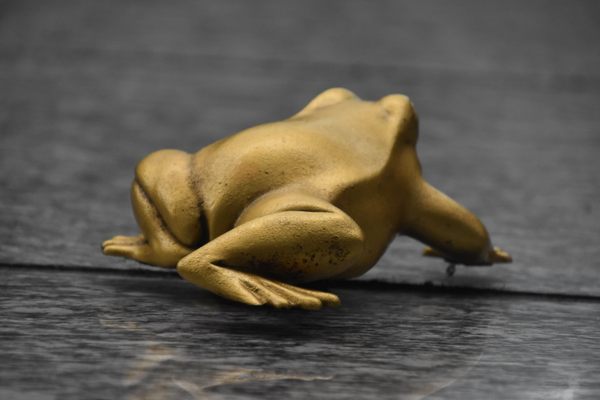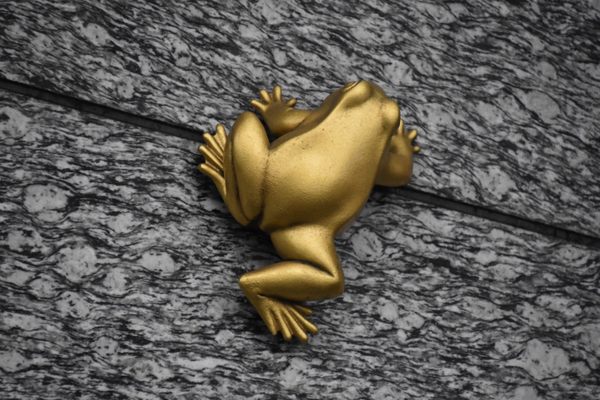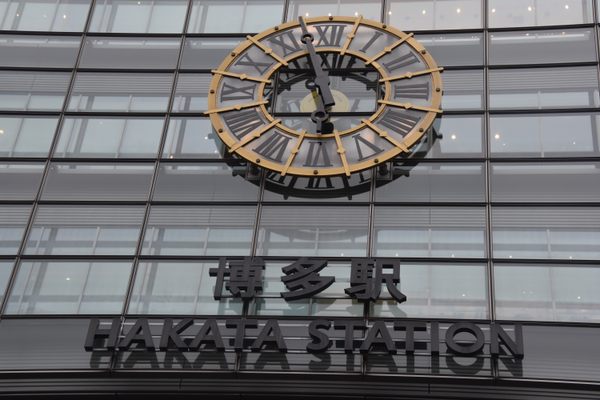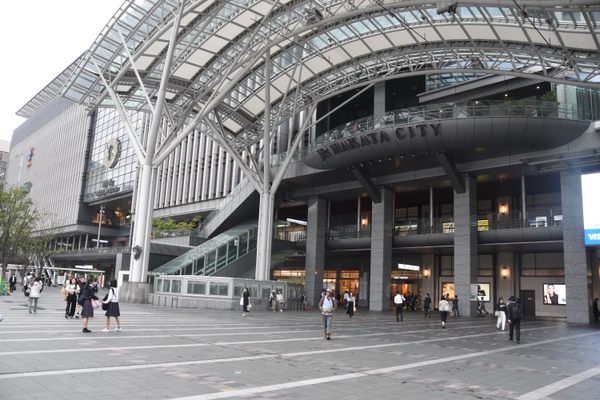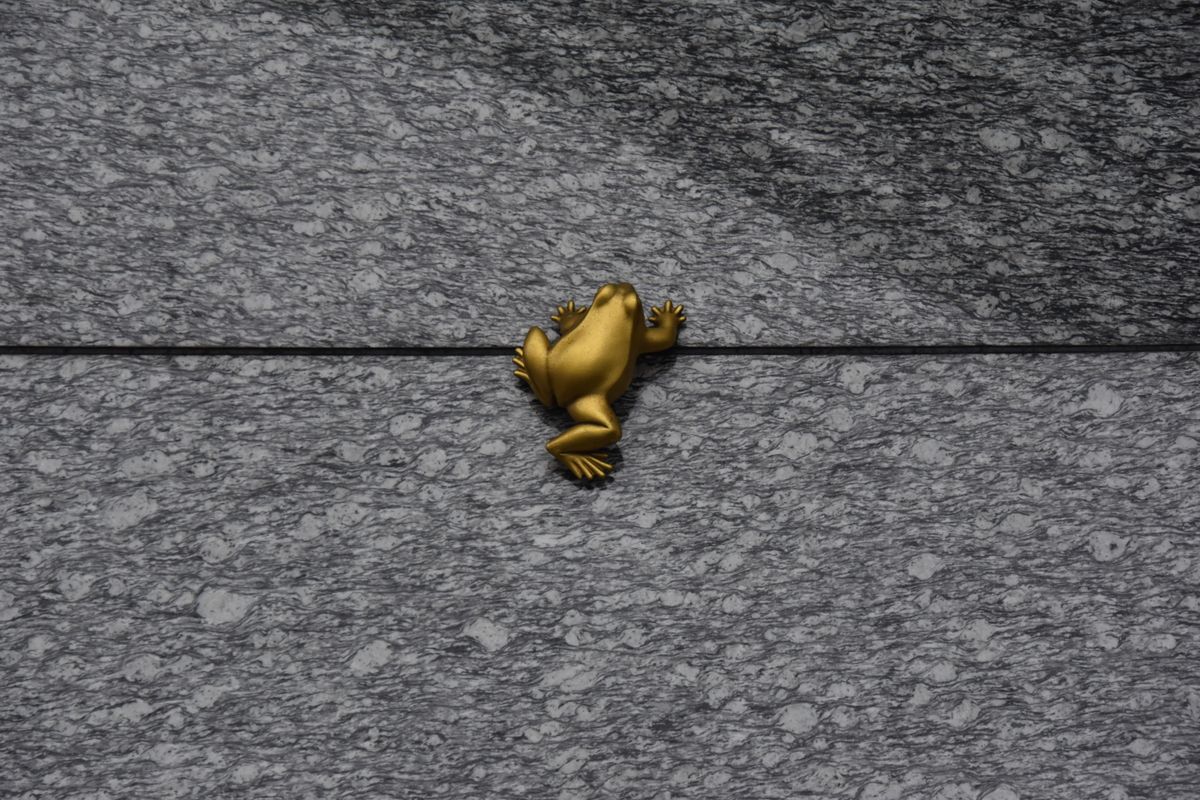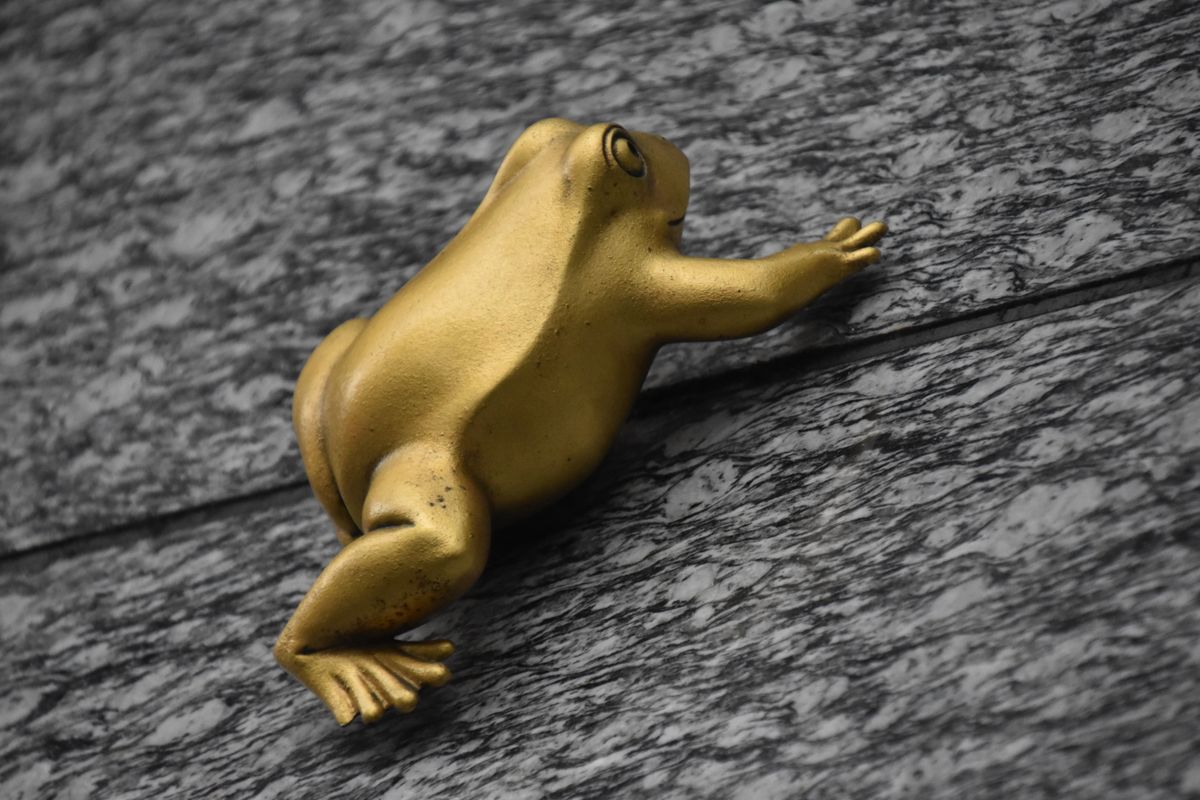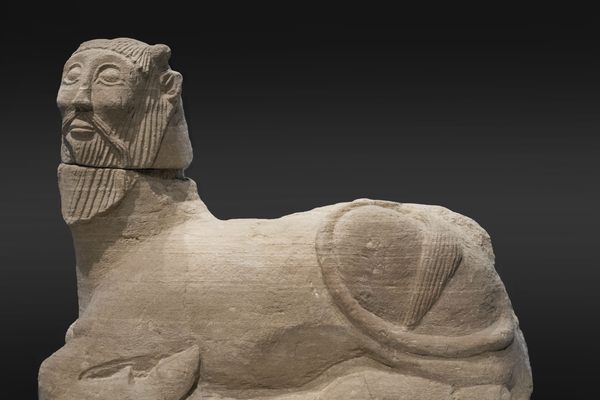About
Since antiquity, frogs have been a lucky symbol in Japanese culture. For one thing, they are associated with the rain—needed to grow rice—and are considered a messenger of several deities. Additionally, the Japanese word for "frog" is homophonous with the word meaning "to return": kaeru. Thanks to this wordplay, frogs are believed to grant safety to travelers until they return home and bring back health and money that one has spent.
At Hakata Station, one of the major transport hubs in Fukuoka, there is a small golden frog hiding in plain sight, and it is said that good luck will come to whoever finds it.
Designed by sculptor Satoshi Yabuuchi, widely known as the creator of Nara Prefecture's mascot character Sento-Kun, the Golden Frog was humbly unveiled when the JR Hakata City station mall was completed in 2011. It has since been climbing the wall of the building, unnoticed by most passengers. The idea behind its conception was that one should walk with their head up, or they would miss nice things in life.
Related Tags
Know Before You Go
Hakata Station has two major exits: Chikushi Gate and Hakata Gate. The frog can be found on the latter side, marked by a big clock on its façade. It's somewhere not far from the hanging screen. There's also the "Seven Lucky Boys" sculpture hiding in plain sight, another Easter egg created by Yabuuchi.
Community Contributors
Added By
Published
August 21, 2023
